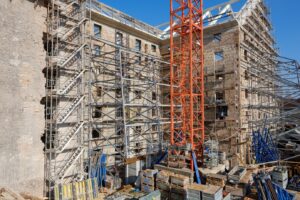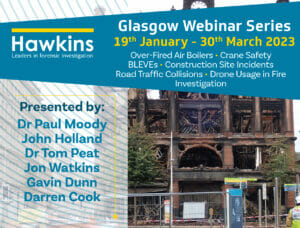The Hawkins RTC team investigate hundreds of incidents each year and are no stranger to the dangers of driving in poor weather conditions. Forensic expert Mike Hopwood has drawn on his experience to share some tips to stay safe whilst travelling as temperatures drop.
- Not all roads are gritted. In reality, only about 25-40% of roads are routinely gritted so be sure to check your journey before you leave. You should be able to find out which roads are gritted on your local authority’s website. Many local authorities also put details about gritting operations on X (formerly Twitter) and/or Facebook.
- Due to ongoing cuts, local authorities have reviewed their gritting routes. If a road you used last year was gritted, it may not be the case this year
- If you can try to use motorways, A and B roads, and bus routes as these are the roads most likely to have been gritted. Housing estate roads and rural unclassified roads are the least likely ones to have been gritted.
- Gritted roads can still be slippery, and things can still go wrong. Rain on a road that has been gritted can be precarious.
- Bridge decks are notoriously difficult to grit adequately and are often damp, so caution should be taken when travelling over bridges.
- Footpaths, footways, etc are rarely gritted. Local authorities expect that the grit spread on roads makes its way onto the adjacent footways. Whilst not untrue, it cannot be relied on for adequate coverage therefore apply caution when on foot.
- Only some public car parks are gritted, never assume one is.
- If you see a sign saying, ‘freezing rain’ (usually on a motorway or trunk road), slow right down. This is the worst situation for icy roads but fortunately quite rare. You may also come across a line of gritters, or the road may even be closed ahead for a short time until the danger has been addressed.
- A sign saying ‘salt spreading’ will mean that you will most likely approach a gritter before too long. Most likely, it will be travelling much slower than you and will be in the inside lane (on a 2-lane road), the middle lane (on a 3-lane road), so be wary of road conditions in that area and of course, the gritter itself.
- If during the night or early morning you notice white crystals on the footway, verge, or central reservation, this is probably an ‘hoarfrost’. It can be extremely dangerous and any salt on the road surface might be rendered useless. Slow down and apply extra caution.
- Below -5°C, the salt spread on road surfaces becomes less effective and below -8°C, the situation worsens further. So, it is worth keeping an eye on the temperature outside your car.
- Roads with yellow grit bins on the side of them are probably not gritted, usually steep, and can be notorious spots for freezing over, it is best to avoid these if you can.
Mike is a Principal Associate in Hawkins and undertakes a wide variety of forensic highway engineering, civil engineering and health and safety investigations. As a holder of certification in confined spaces and health and safety competence, Mike is able and permitted to conduct on-site investigations on most live road and construction sites.
In addition to his work in engineering and health and safety, Mike also puts to practice his road layout and condition knowledge, experience with on-site handling of traffic accidents, and excellent mathematic skills, in the reconstruction and causation of road traffic accidents.
If you would like Mike or a Hawkins expert from any other discipline, to investigate an incident, please get in touch and we will be happy to discuss the range of services that we can offer.







